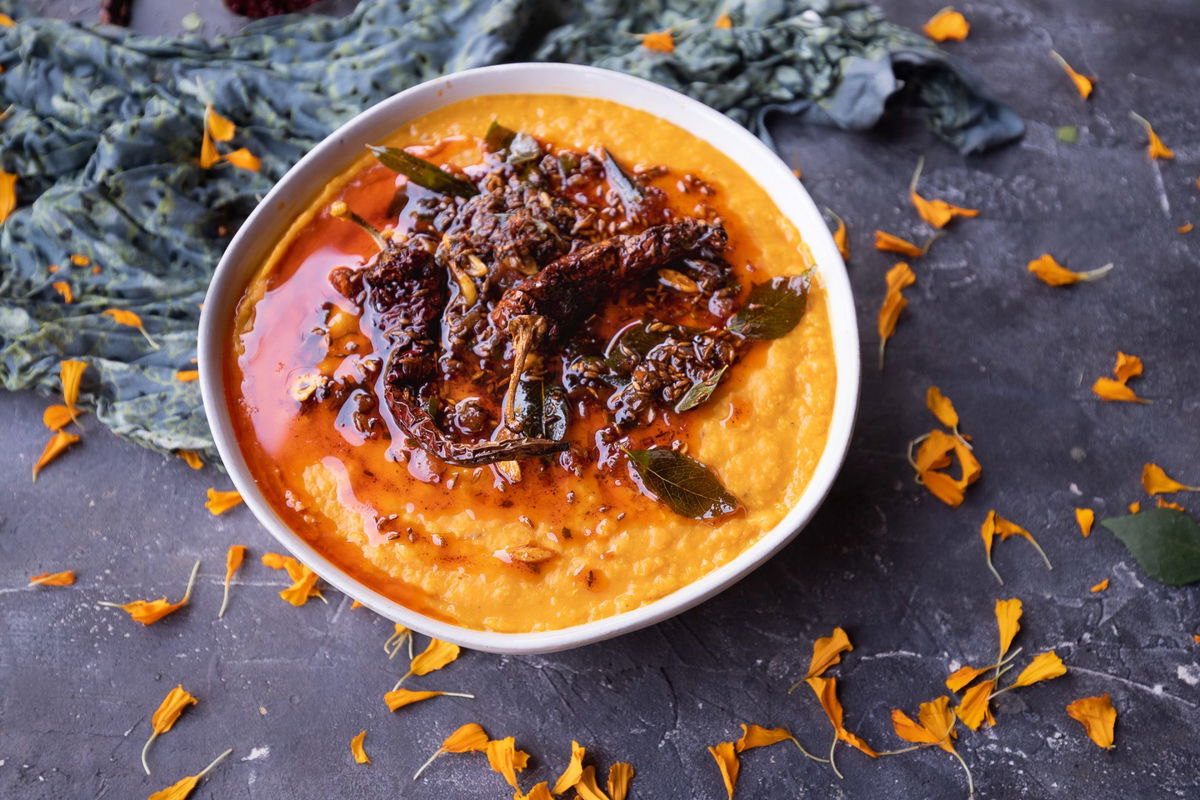A bowl of khichdi made just right is like a big, warm, comforting hug. Whenever I’m feeling under the weather or a little down, khichdi is the meal that hits all the right spots. With only 5 ingredients, it takes little effort to assemble and is ready in about 20 minutes. It’s a classic dish that is simple and well-balanced. It’s a meal I could assemble in my sleep from ingredients that are always at the front of my pantry.
About this Recipe

Khichdi is such an ingrained part of me and has been passed down from generation to generation in my family that I would like to label it as Gujarati. Khichdi is something I’ve been eating and making since I was a little kid. It’s a very basic food. In fact, this sadi khichdi was the first solid food I ate and it was the first solid food I gave to my son, such is the tradition in Gujarati households.
As much as we Gujaratis would love to claim khichdi for ourselves, we cannot. Khichdi is an ancient recipe, one of the oldest known foods in India. With its balance and simplicity, it has survived through the years as a practical dish that uses India’s most common staples. There are many, many variations found throughout India, using different lentils and spices.
This version, soni khichdi, is especially popular in Gujarat and across North India, but khichdi is a comfort food for nearly all Indians and many surrounding cultures, from Sri Lanka to Nepal, to the Middle East, and even Kenya and Tanzania.
Sona khichda is the simplest version of khichdi, its simplicity has a lot to do with why I love it. Most of the flavor comes from the creamy nuttiness of the ghee that is enhanced by the turmeric and salt.
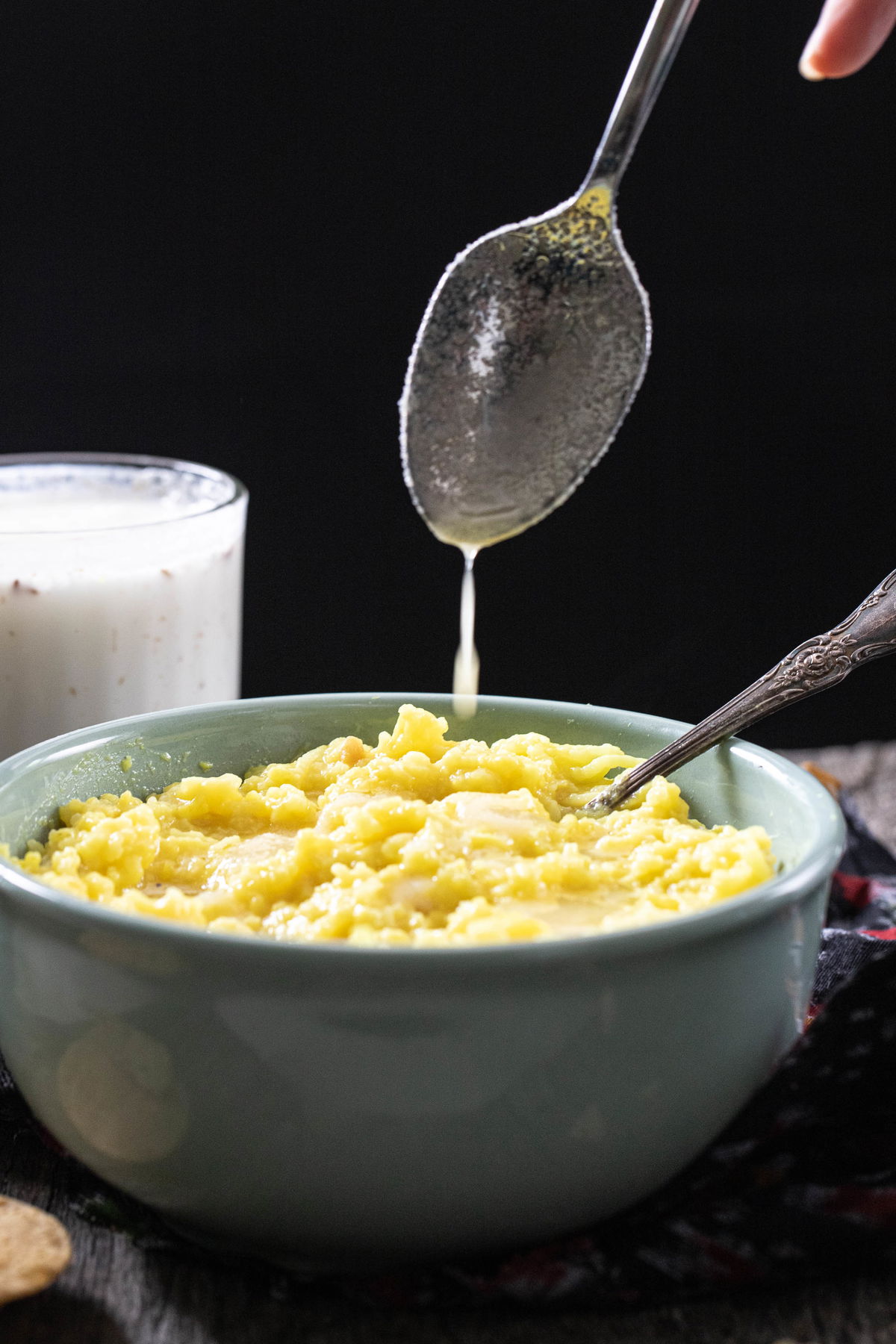
The traditional recipe is one part rice to one part dal. According to food researcher KT Achaya, ”the recipe in Akhbar’s kitchen specified equal proportions rice, moong dal, and ghee along with certain spices (A Historical Dictionary of Indian Food, p 130).” I prefer to use a little more dal than rice, which does little to affect texture or flavor but elevates the protein content.
Ingredients

- Rice – I typically use basmati rice, although shorter-grained rice is actually better for the porridgy consistency. A classic choice of rice for khichdi is kolam, though I love it with the basmati rice I always have in my pantry. You can use whatever rice you have on hand. Rice varieties such as jasmine or Calrose will do just as well.
- Dal – for the dal, I use moong dal. Khichdi can be made with any dal, but my family always uses moong. When I was in college, I used masoor because it was what I could easily get at the local supermarket. Many families have their own preferences. 7 minutes is perfect for moong dal, for masoor, I would reduce it to 6 minutes. For your choice of dal, use the table here for cooking time. Rice only takes a few minutes so if you base your cooking time on the dal it will be sufficient.
- Ghee – Ghee is an important component of khichdi for flavor, texture, and aroma. My grandma said the ghee would make you strong and she would pour so much ghee in, especially in the winter. As a nourishing food, the ghee adds fat to balance the carbohydrates and protein from the rice and lentils. My generation grew up with more of an aversion to fats and I use much less ghee than she did.
- Turmeric – A little turmeric gives the khichdi its nice color and of course, turmeric is considered a health-boosting spice.
- Salt – use salt to taste. I prefer a khichdi that is a bit salty because it lacks other flavors.
Water
Water gets a special mention when it comes to making khichdi. Khichdi is essentially a porridge of rice and dal and the amount of water you use plays an important part in the final texture. My family usually makes a very dry khichdi, while many people prefer a much soggier, wetter khichdi. With 5 1/4 cups of water, this recipe offers a middle ground.
It’s nice to have a khichdi that is on the dry side when you will be adding chaas or mixing in yogurt. These add their own moisture to the dish. Being in the middle ground, this recipe is great whether or not you are enjoying it with yogurt. I would only recommend a wetter khichdi if you were planning to eat it on its own.
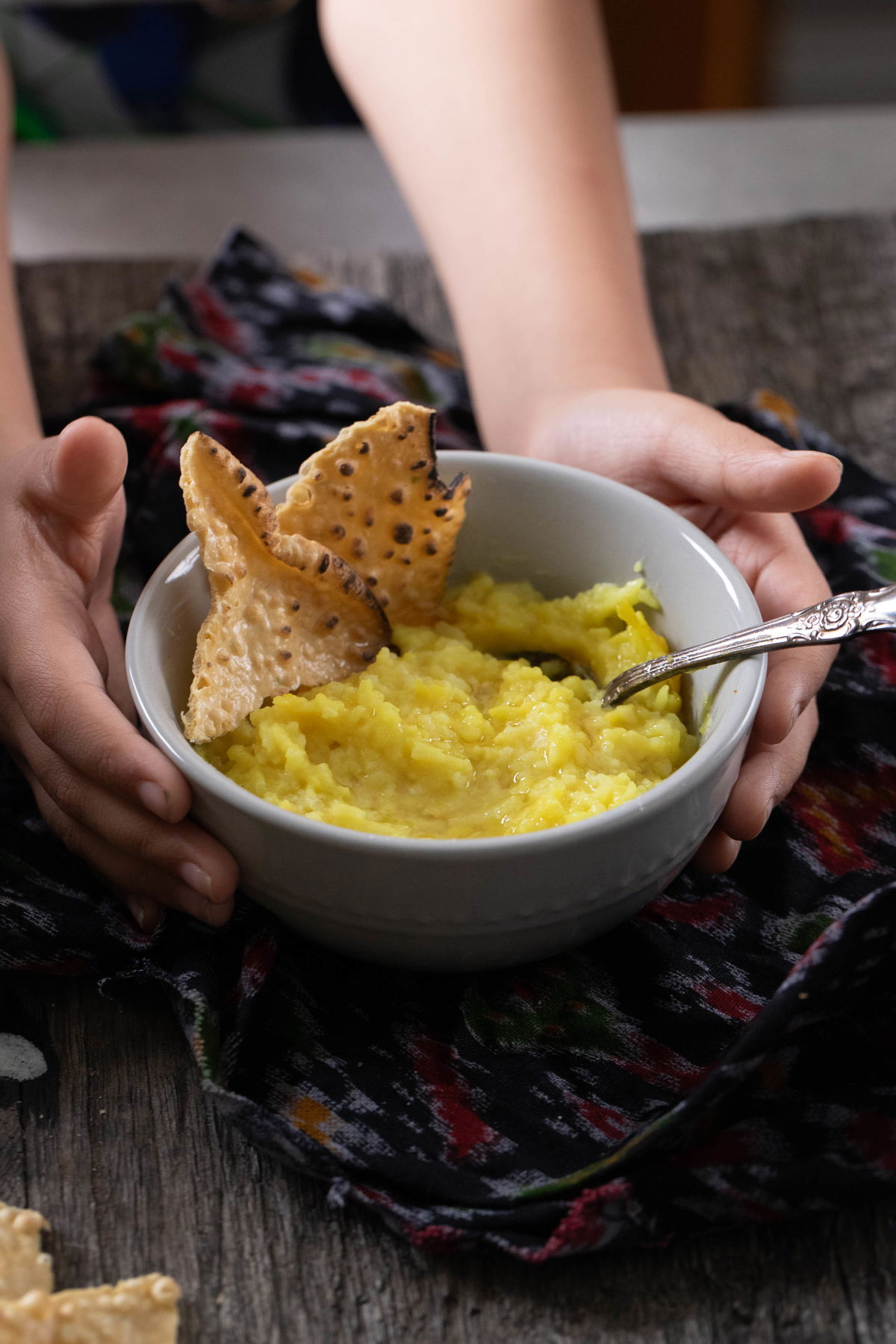
Enjoying Khichdi
With a steaming bowl of khichdi in front of me, there is only one thing that can make it any better. That is a cup of chaas. I love to dip my khichdi in salty chaas before I savor each bite.
The most traditional chaas would be made with buttermilk, a byproduct of making ghee from yogurt. But the most convenient way to make it is to mix some water, salt, and spices with yogurt.
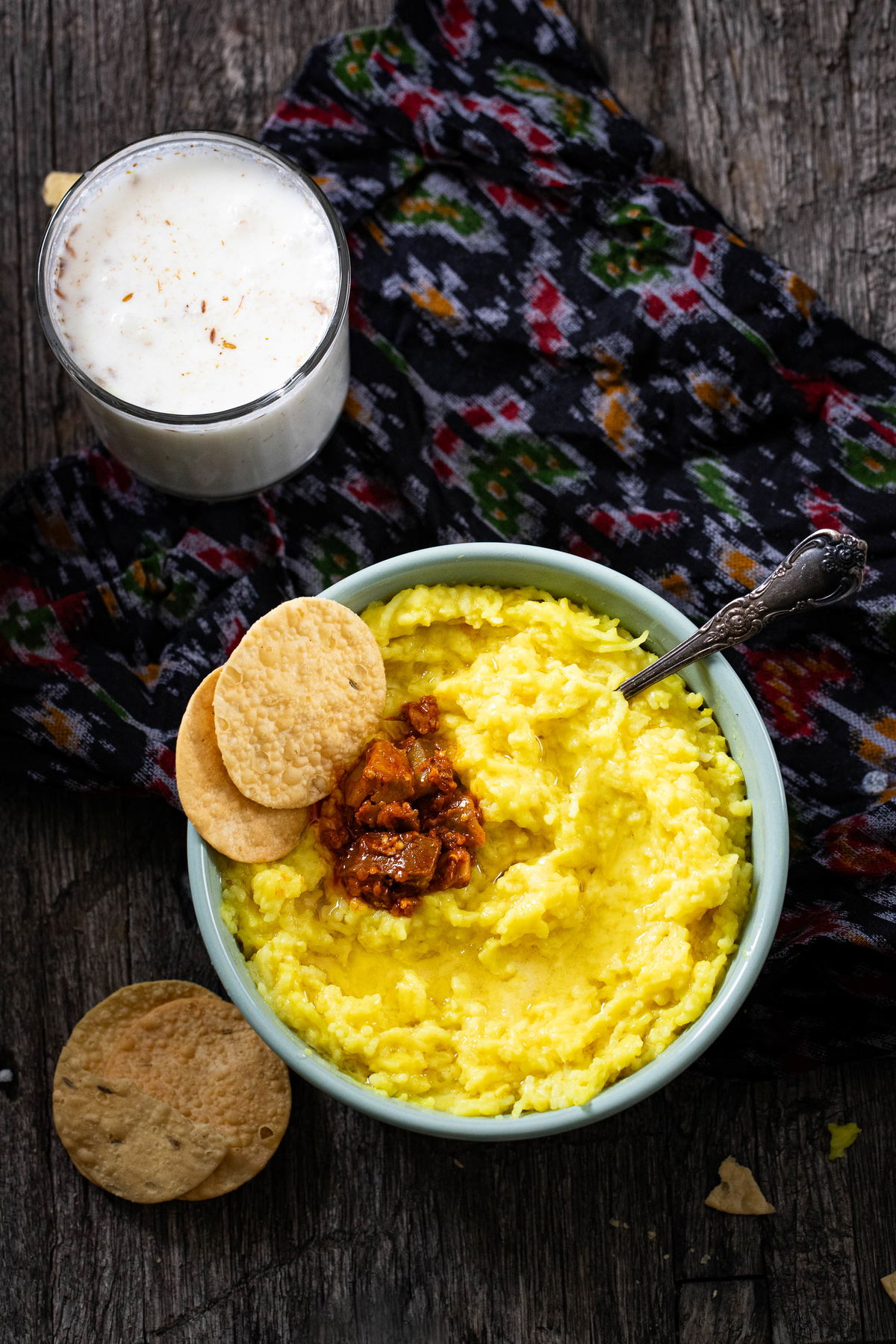
Cooking Tips
- See the section above about getting the water ratio that you want
- Old lentils can take longer to cook, so if your moong has been sitting in your pantry for a couple of years you may need to extend the cooking time.
Variations
There are hundreds of recipes for khichdi, if you fall in love with the dish you will undoubtedly develop your own custom recipe. Here are some common ways to mix it up:
- Ratio of Dal to Rice: I find that the ratio of dal to rice is not that important and can be pushed quite a lot in one direction or the other without the dish suffering. 1:1 is the most traditional and what my Grandmother would use, but that was never a strict rule. I prefer 1:3/4 dal to rice for the extra protein.
- If you find sona khichdi to be too bland, add your spices of choice. You can add a vaghar before adding the rice and lentils: heat some ghee, add cumin seeds, hing, garlic, onions
- Add vegetables like potato, cauliflower, peas, or green beans.
- Replace the water with chaas or a combination of yogurt and water.
- To make it dairy-free, use your favorite oil or non-dairy butter in place of the ghee.
- “Kedgeree” is a British adaptation of khichdi. It is a breakfast item that adding fish (usually haddock), boiled egg, parsley and sometimes golden raisins.
Refrigeration
Khichdi refrigerates well for up to 4 days. Reheat in the microwave or a pan with a splash of water. You can add a vaghar to the leftover khichdi by heating some ghee, and adding cumin seeds, hing, garlic, and onions. You will still have to add some water.
Some people like to freeze khichdi, I don’t recommend it because it will break down in the freezer and become more of a mush.
Sadi Khichdi
A simple, no-fuss version of the beloved Indian comfort food made with rice and lentils.
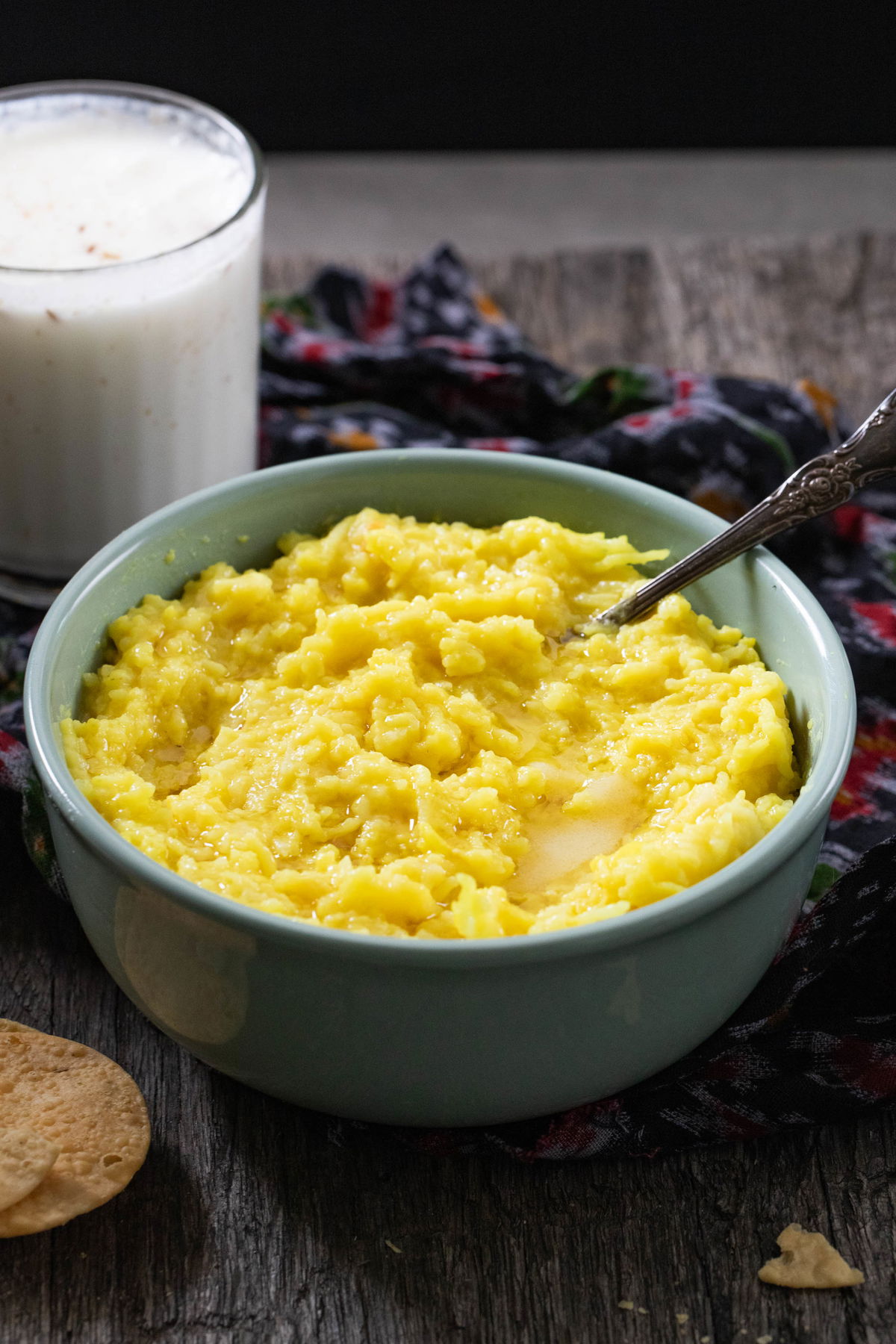
Ingredients
- 3/4 cup Basmati rice
- 1 cup moong dal
- 5 1/4 cups water
- 2 Tbsp ghee (or to taste)
- 1/4 tsp turmeric powder
- 1/2 tsp sea salt (or to taste)
Instructions
- Thoroughly rinse the rice, until the water runs clear. Rinse the dal separately, also until the water runs clear.
- Add all ingredients to the Instant Pot and cook on high pressure for 7 minutes.
- Allow a natural pressure release for 10 minutes.
